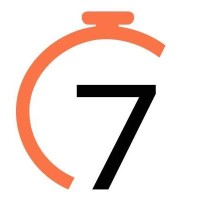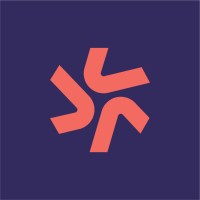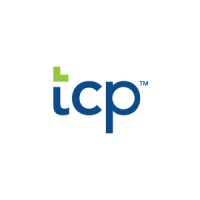What is employee scheduling software?
Employee scheduling software helps managers ditch old-fashioned spreadsheets and create a better schedule with less time and effort. The software accounts for employee requests and skill sets, as well as labor compliance laws like overtime regulations. Then, it automatically creates a schedule for you. The software also includes features that make adjusting and adhering to the schedule easier once it’s been created, including shift swapping, custom alerts, and vital integrations.
While this technology used to only be available for large businesses willing to shell out a hefty fee, the rising popularity of cloud-based software and software-as-a-service (SaaS) has made employee scheduling software more accessible. The software can be used in a wide variety of industries, including retail, manufacturing, and food service, and it works well for small, medium, and large businesses.
Find your new employee scheduling software
What is the best employee scheduling software?
What are common features of employee scheduling apps?
Employee scheduling software is meant to make your life easier. It should greatly reduce your scheduling time, be easy to access, and integrate with other key software you use to manage your workforce. When you look for the best employee scheduling apps, your choice should include the following features.
AI-powered automatic scheduling
Many employee schedule makers use artificial intelligence (AI) to automatically create schedules, so you don’t have to. The AI pulls data from your
HR system to find employee time-off requests and job titles, ensuring that employee requests are honored and each shift has the right number and type of employees working. It can also pull data from your
business intelligence platform to anticipate how busy each shift will be based on historical trends. This prevents you from having to call in workers or cancel shifts last minute.
Employee self-service portal
Employee scheduling software should either include its own self-service portal for employees or integrate with
HR software that does. With this feature, employees can enter time off or request certain shifts, freeing up managers to focus on more important tasks. Currently, about
15 percent of shift workers feel that their requests for shifts are ignored, and 27 percent say that they have absolutely no choice when it comes to their schedule. A self-service portal puts some power back in the hands of your employees and increases their satisfaction, leading to less burnout and less turnover.
Mobile access
Both you and your employees need to be able to view the schedule even outside of office hours. The best employee scheduling tools include mobile access to make it easy to pull up the schedule on the go. Your employees can even put in shift requests after hours, and you can make any necessary changes as they arise, without needing to be at your computer. This increases efficiency and ensures you’ll have a full staff. This feature is also critical for managers who are rarely at their desks, like restaurant managers and construction foremen.
Mobile access also allows the system to send timely alerts to managers. Some alerts they may need quickly include:
- Shift change/cover requests (these would also go to other employees)
- Notifications that someone hasn’t clocked in
- Alerts that an employee may be reaching overtime soon or already has
Payroll integration
Shiftwork is irregular by nature, which can make payroll a nightmare. Your employee scheduling software needs to integrate with your
payroll software to automatically port shift data over to payroll. This helps you keep a more accurate payroll and pay your employees correctly. This integration also helps automate any overtime pay to keep you compliant with overtime laws.
Also read:
3 Expensive Payroll Error Laws You Need to Follow
Time management
Even if it’s something you do every day, remembering to clock in and out can be difficult. Many employee scheduling apps include time management features to alert employees when they forget to clock out based on when their shift was supposed to end. Additionally, the scheduling tool will send information to the manager if there are any unusual occurrences like irregular shifts, so they can follow up with the employee and make any necessary changes. They may also send alerts to employees’ mobile devices to clock in or out when it’s time to reduce the number of errors.
What are the benefits of employee schedule makers?
Employee scheduling software provides many benefits to managers and employees alike. Thanks to spending less time making schedules, managers can spend more time optimizing business processes to improve productivity and employee satisfaction.
Less time spent scheduling
With employee scheduling software, the application makes the schedule for you, meaning you get a ton of time back in your week. This way, you can get more done to improve your department and take less work home with you at the end of each day. When the software completes the schedule automatically, all you need to do is double-check it and make any necessary adjustments as they arise. And if you have a self-service portal, employees can handle last-minute shift changes on their own.
Higher employee satisfaction
When employees don’t feel like they have a say in their schedule, especially when shift work already
negatively affects mental and physical health, they’re more likely to develop burnout and leave, looking for better opportunities. Employee scheduling software gives them more control over their schedules, allowing them to request certain shifts and accounting for those requests in the scheduling process. This improves employee satisfaction and reduces attrition.
Also read:
6 Strategies to Reduce High Employee Turnover
Compliance with scheduling laws
Fair workweek, or predictive scheduling, laws are cropping up across the United States in order to address the difficulties companies place on shift workers with last-minute shift changes, like finding last-minute childcare or driving to work only to find out their shift has been canceled. They often require that employees receive a certain amount of advance notice about their schedule and may require extra compensation if the company suddenly adds or cancels shifts. Employee scheduling applications reduce the strain that these additional regulations add to the scheduling process by using AI to accurately plan shifts in advance, calculating how many staff members the organization will need for each shift, and reducing the need for last-minute changes.
Industry considerations for employee scheduling tools
Employee scheduling tools are used across a variety of industries to make scheduling employees easier and less time-consuming. Manufacturing, retail, food service, and construction businesses are just a few examples.
Manufacturing
Manufacturing companies often work on swing shifts, which can make employee scheduling notoriously difficult. Employee scheduling software for manufacturing companies should integrate with their order management system, allowing the AI to accurately schedule enough workers to meet their quota. They can also segment shifts by employee role, allowing only certain employees to bid on shifts and preventing the company from being understaffed.
Additionally, manufacturers often deal with regulations and union criteria on overtime, shift lengths, and shift rotations that they need to take into account when creating a schedule. Employee scheduling applications for manufacturing companies enable managers to create custom criteria when automating schedule generation to keep from violating these regulations.
Retail
While many retail employees are adults, many are also teenagers balancing work and school. In fact,
29 percent of all retail employees only work part-time. This makes scheduling difficult because you have to work around not only class time, but also projects, extracurricular activities, and cram sessions. Because of this, employee scheduling software for retail teams needs to allow employees to easily switch shifts among themselves in case something comes up. Many will include features that allow employees to post a shift that they need to switch out, and it will notify the rest of your team of the new availability.
Additionally, retail employee scheduling applications should integrate with your
retail point-of-sale (POS) system. This will provide historical sales data and help you determine how many people you should have on hand for each shift. It also allows them to clock in and out at the cash register instead of using another system, which centralizes all the financial data from payroll with sales.
Food service
Food service, like the retail industry, relies heavily on a mix of full and part-time employees with varying and shifting schedule needs. Therefore, they also require shift-swapping features in their employee scheduling software. Many food service employee scheduling software also includes a live chat option for direct and group messages, allowing employees to easily offer shifts for trade or alert their manager if they fall ill.
Food service managers also need their employee scheduling software to come with an easy-to-use mobile application, so they can update the schedule on the fly. These managers are rarely at a computer or in an office, so mobility is a must for scheduling efficiency.
Construction
Many construction workers aren’t at the same job site for long periods of time, especially if they work on shorter-term projects like painting. Because of this, construction employee scheduling software should integrate with Google Maps or a similar application, allowing employees to quickly see where their job is located and get directions directly from the application. This helps eliminate confusion and prevent workers from showing up at the wrong site.
Employee scheduling software for construction companies should also include a simple mobile app that will alert employees when their shift is close to starting and let managers know if someone hasn’t clocked in for a shift. Because construction jobs are often spread apart, a manager might not know until much later that an employee didn’t show up unless the system alerts them.
Also read:
6 Field Service Apps That Do Mobile Right
Choosing the best employee scheduling software for your business
Depending on the industry that your business is in, you may prioritize different features when it comes to choosing the best employee scheduling software. Mobile applications, the ability to switch shifts, and regulatory compliance are all important but don’t discount the value of integrations to boost the functionality of your system. Look for employee scheduling applications that are geared toward your industry to ensure they’ll have the features you need.
Additionally, you should look at reviews from companies similar to yours and take advantage of free trials when they’re available. Make sure the employee schedule maker has all of the features you need before signing a contract.
 ZoomShift
ZoomShift 7Shifts
7Shifts When I Work
When I Work Deputy
Deputy Homebase
Homebase Voila!
Voila! TCP (TimeClock Plus)
TCP (TimeClock Plus) Shiftboard
Shiftboard

